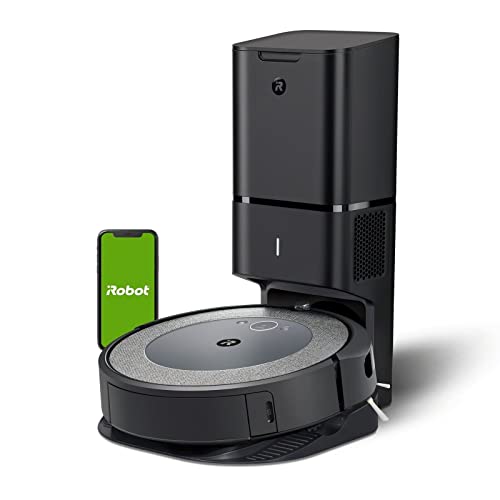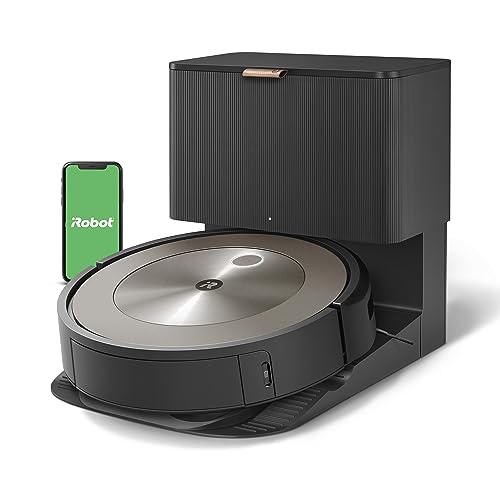Guide To Self Emptying Vaccum: The Intermediate Guide The Steps To Self Emptying Vaccum
 The Convenience of a Self-Empting Vacuum
The Convenience of a Self-Empting Vacuum
While the latest robot vaccums are remarkably quiet when in operation but emptying their trash bins can be an issue. That’s especially true if you use one with an automatic base.
 The bases come with an accessory dock that connects to the robot vaccum, and then vacuums out the debris into a larger bin while charging the device. This means that the dust bin of the robot vacuum is no longer required to be empty every two or three cleaning sessions, but just once every 30 to 60 days.
The bases come with an accessory dock that connects to the robot vaccum, and then vacuums out the debris into a larger bin while charging the device. This means that the dust bin of the robot vacuum is no longer required to be empty every two or three cleaning sessions, but just once every 30 to 60 days.
1. Convenience
Although it may seem the height of laziness to let your vacuum empty itself however, it’s actually a fantastic convenience feature. The dustbins of most vacuums must be manually empty at the conclusion of every cleaning session. This can take a long time and hinder the robot from cleaning the entire room in a single session. A self-emptying vaccum has an element that will automatically empty the bin when it’s full, saving you the hassle of bending down and emptying the little bin.
Some models have a larger bin, which can store up to a month’s worth debris. The dirt is moved quickly from the robot’s base to the bin, which makes it a useful feature for people with large houses or pets that shed a great amount.
Another thing to keep in mind when you’re considering a self-emptying robotic vacuum is that they’re typically more expensive than other kinds of models. This is primarily due the fact that they come with a more sophisticated base with a function in addition to charging your robot vacuum.
It might seem obvious but self-emptying bases are often quite tall. This means they could take more space than other types of bases, which can be an issue for smaller homes or those with small storage spaces. The design of some self-emptying robot vacuums can be an eyesore. It’s not a problem for most people, but it’s something to think about for those who are concerned about the appearance of their home. The good news is that many robot vacuums with self-emptying base look really cool. I’ve had people stop me to compliment my amazing piece of technology. Some might think that alone enough to justify the price.
2. Less Allergens
Allergens can cause problems in many homes, especially if there is someone with allergies. Using a self emptying vaccum can cut down on the amount of pet dander, dust and other allergens that are released into the air after vacuuming. This is because you can be sure that all the unpleasant particles are absorbed by the filter and bag instead of being released into the air, which could impact those with allergies.
If you would like your vacuum cleaner to be more allergy-friendly, opt for one with HEPA filtering. It also comes with an array of attachments that can be used for cleaning different surfaces. These types of vacuums are great to remove pet hair, textured crumbs and other hard-to-clean debris from your home. This model comes with an extension of 25 feet and reaches from floor to ceiling.
3. Easier Maintenance
The ability of your robot vacuum to automatically empty the bin into the base of its docking station is a major benefit. It stops the bin from becoming overfilled which could cause a clog and cause your robot to smell or stop working. It’s also more hygiene-friendly to use the robot rather than manually emptying the garbage. People with allergies will benefit from this because it keeps allergens from getting back into the air. The Samsung Jet Bot+ has large bins that hold more debris than most self empty robot vacuum-emptying best robot vacuum and mop self-empty vacuums. This will help keep your floors clean longer. The bin has an integrated filter that captures pet hairs, dirt and other small particles. This makes it easier to clean and less likely that the bin will fill up.
4. A Shorter Time
Self-emptying robots are a game changer for people who have a full schedule. They allow you to complete more cleaning, without having to be physically present and empty the trash bin at the end of each cleaning session. This reduces the amount of time you are occupied with chores and allows you to have more free time to relax or take on other tasks.
Regular robot vacuums are usually equipped with dust bins or small bins that is used to store the dirt and debris it accumulates after every cleaning cycle. The issue is that when you need to empty the bin you’re also exposed all the unpleasant stuff that got kicked up into the air and you might have to manually wipe it down before using it again. In 2018, the first self-emptying robotic vacuum cleaners were introduced. When a self-emptying vaccum’s bin is full, it automatically returns to its dock and connects to the base station. There, the dust and debris is taken out of the small bin with a loud squeak and into a foot-high base canister with the help of a paper vacuum bag. The vaccum recharges its battery and then returns to its pre-programmed path.
Manufacturers usually rate the canister bags to hold debris for 30-60 days. This means you will need to empty the vaccum’s base station approximately once or every month, depending on how often you clean and how filthy your floors become. In comparison to emptying the bin of a regular robot vacuum after every cleaning session, that’s an enormous time savings and also means that you’re exposing yourself to less allergens on a more frequent basis.
Self-emptying robots also save you time by eliminating the necessity of replacing the filter. We’ve all had to do this at least once. It can also help to avoid issues like over-stuffing or blockages, which could cause the performance of your robot to be affected.